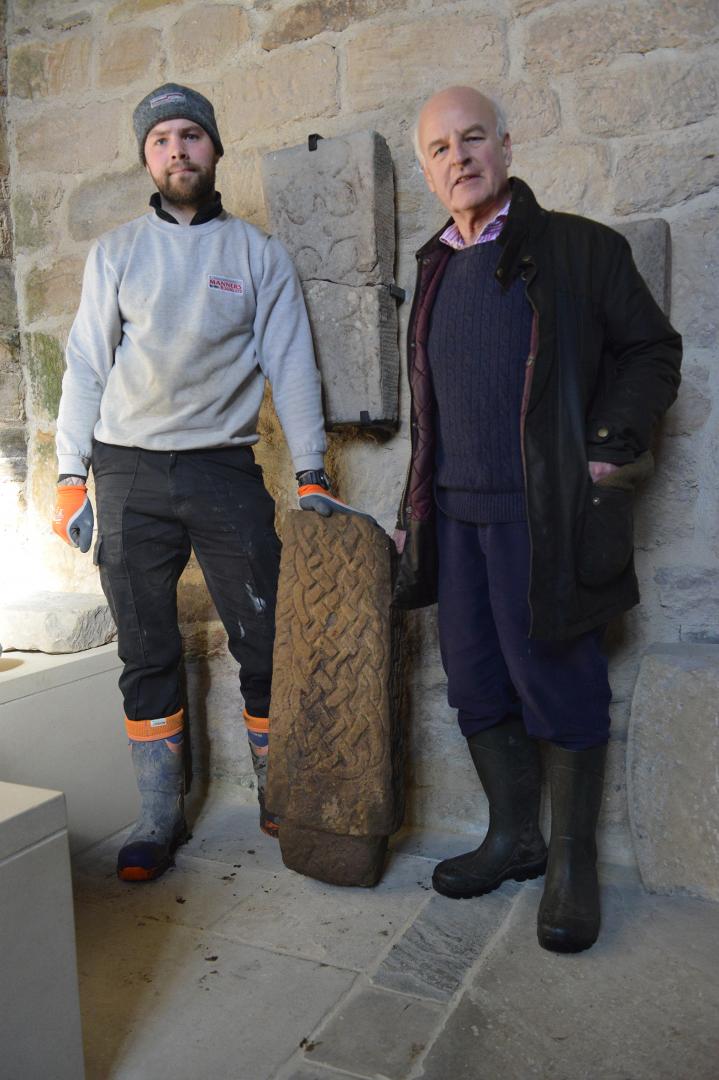WORKERS have unearthed an ancient carved stone believed to date from the 8th or 9th century while building an extension to Wycliffe’s historic church.
The stone is thought to be the shaft of a large cross that was carved not long after Christianity was brought to the area.
It was discovered as workers from T Manners and Sons were digging the foundation for a new toilet and kitchen facility at the back of St Mary’s Church.
Church warden Keith Miller said: “The archaeologists are quite excited about it. Bishop Ecgred granted the vill of Wycliffe to the monks of St Cuthbert in 840, so it is believed to be from that time.”
He added that while most of the stone is carved with a rope-like weave pattern, it also has a cross etched into it.
Mr Miller said: “It was surprisingly close to the surface. We did an archaeological survey and we also found foundations of what they believe was an earlier church.”
The find adds to an extensive collection of carved stone items that had previously been discovered at the church, including parts of crosses, a hogback tomb cover and parts from a previous church on the site.
These include an impressive carved stone from what was a doorway, which the church warden said “suggests it was a pretty impressive building” .
He added: “It points to this being an important centre. It is a tiny hamlet now, but it was important at that time.”
The church has several other important historical pieces, including a mensa stone which Mr Miller believes was buried and hidden at the time of the Reformation.
He said: “It has five crosses on it, marking the wounds of Christ.
“This is very rare because most of them were broken up [after the Reformation].”
Ironically, the church has strong links to reformist John Wycliffe, who was described by Martin Luther as the “morning star of the reformation” , and both of his parents are buried near the altar with its mesa stone.
Also protected during that time were many of the medieval stained-glass windows, with only some of the saints’ faces being removed.
Mr Miller said: “There is more medieval glass here than anywhere else in the county, with the exception of Durham Cathedral.”
ADVERTISEMENT
Ancient carved stone unearthed during church renovations
ADVERTISEMENT
ADVERTISEMENT
ADVERTISEMENT






